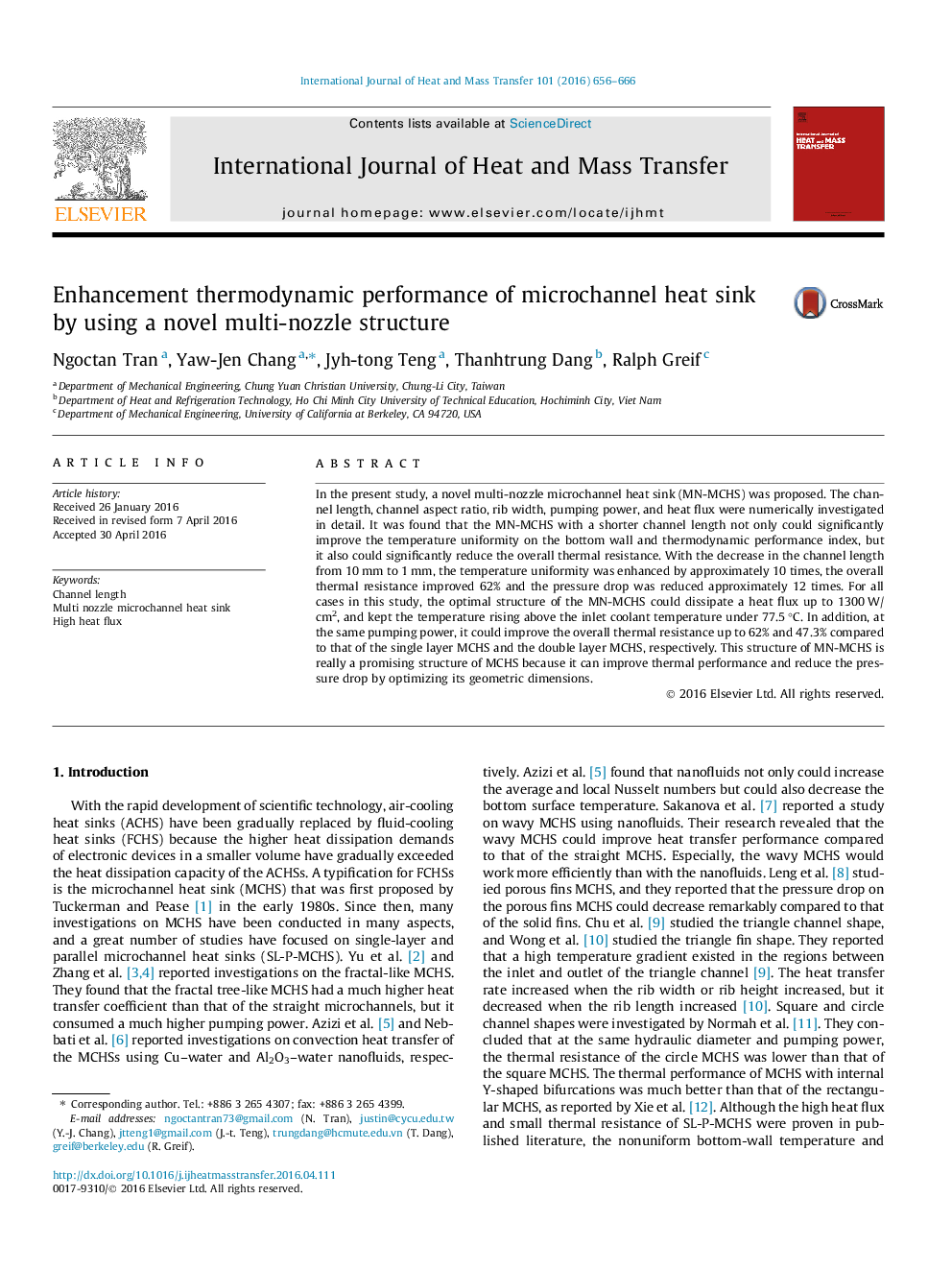| Article ID | Journal | Published Year | Pages | File Type |
|---|---|---|---|---|
| 7055354 | International Journal of Heat and Mass Transfer | 2016 | 11 Pages |
Abstract
In the present study, a novel multi-nozzle microchannel heat sink (MN-MCHS) was proposed. The channel length, channel aspect ratio, rib width, pumping power, and heat flux were numerically investigated in detail. It was found that the MN-MCHS with a shorter channel length not only could significantly improve the temperature uniformity on the bottom wall and thermodynamic performance index, but it also could significantly reduce the overall thermal resistance. With the decrease in the channel length from 10 mm to 1 mm, the temperature uniformity was enhanced by approximately 10 times, the overall thermal resistance improved 62% and the pressure drop was reduced approximately 12 times. For all cases in this study, the optimal structure of the MN-MCHS could dissipate a heat flux up to 1300 W/cm2, and kept the temperature rising above the inlet coolant temperature under 77.5 °C. In addition, at the same pumping power, it could improve the overall thermal resistance up to 62% and 47.3% compared to that of the single layer MCHS and the double layer MCHS, respectively. This structure of MN-MCHS is really a promising structure of MCHS because it can improve thermal performance and reduce the pressure drop by optimizing its geometric dimensions.
Keywords
Related Topics
Physical Sciences and Engineering
Chemical Engineering
Fluid Flow and Transfer Processes
Authors
Ngoctan Tran, Yaw-Jen Chang, Jyh-tong Teng, Thanhtrung Dang, Ralph Greif,
